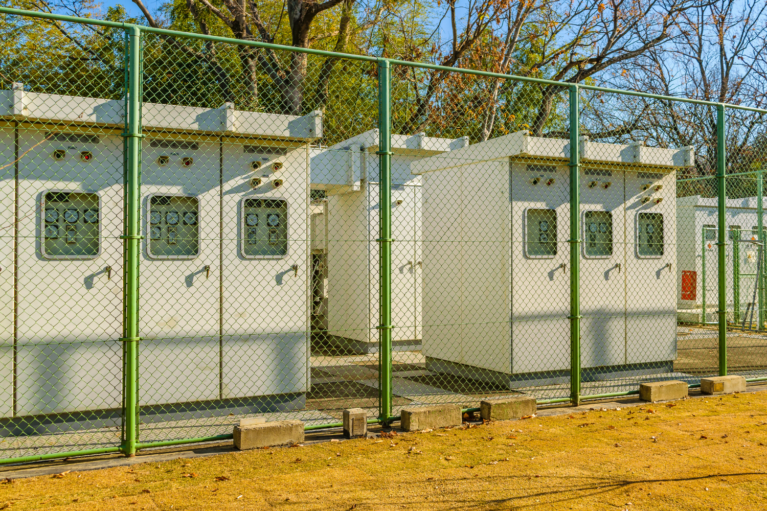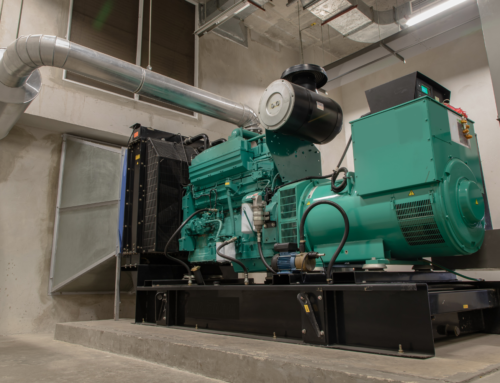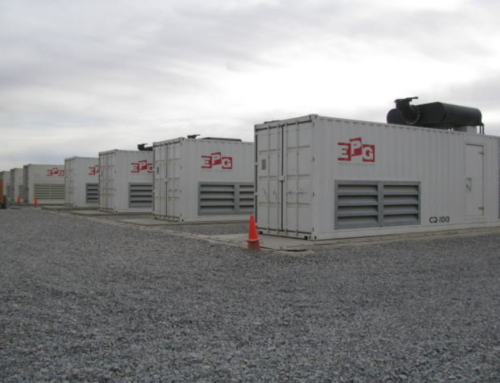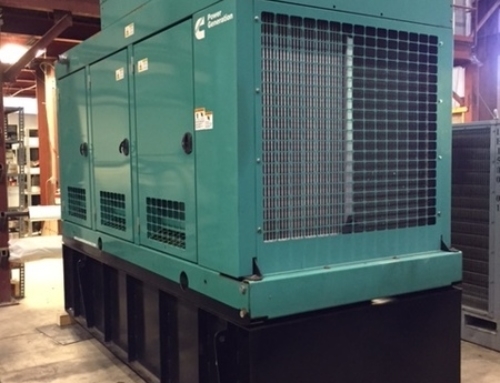Wondering what a standby generator is and how it works? That’s exactly what we’ll be covering in this article!
From running equipment, machines, and electrical installations to keeping workers comfortable, business facilities rely heavily on electricity in several ways. Storms, natural disasters, and unforeseen circumstances can lead to power outages that can harm your business operations.
Data shows that power outages have become longer-lasting and more frequent in the U.S. in the past few years due to changes in weather patterns and other factors. So, this is a more serious issue than you might think.
Your entire business may face downtime leading to a loss of productivity and profitability. Here’s when standby generators come in handy. Let’s understand how they can help your facility maintain operations in case of a blackout.
Table of Contents
What is a Standby Generator?
A standby generator provides backup power to your facilities, business operations, and industrial & commercial applications in the event of an outage. It is permanently installed outside your facility for robust power backup solutions in case of emergencies.
Standby generators come with diesel or natural gas engines that generate utility power within minutes of the blackout. They need a concrete pad for the foundation and are usually stationary.
Unlike continuous or prime generators, these generators are utilized only during blackouts on account of an aging power grid or power outages due to man-made or natural disasters and inclement weather. A standby generator can provide power for days during extended blackouts, based on the configuration and fuel type of the generator.
Standby Natural Gas Generators
These generators are connected directly to your locale’s natural gas pipeline. There is no need to refuel as long as the main gas utility is operational. Higher frequency of maintenance and risk of being shut off during natural disasters are two major downsides to natural gas generators.
Standby Diesel Generators
These generators come with attached fuel tanks that provide fuel to the internal combustion engine for electricity generation. Cost of acquisition and limited tank capacity are two major downsides to diesel generators. You need a contingency plan, including the logistics for delivering diesel fuel during emergencies.
What is an Automatic Transfer Switch (ATS)?
Standby generators are widely used to provide backup power when the main power source fails. They are connected to the load through an Automatic Transfer Switch (ATS) which prevents the two power sources (main utility supply and backup power) from being mis-synchronized.
Normally, the mains utility powers the load through the ATS. And in the event of a power outage, the ATS detects the power loss and transmits a signal to turn on the generator and switch the power source from the utility to the standby alternator. The transfer process generally takes a few seconds after the generator starts.
How Does a Standby Generator Work?
Connected directly to the facility’s electrical panel, standby generators are powered via an external supply of fuels like natural gas or diesel. The fuel type and generator size decide what to power and for how long.
While installing a standby generator, it’s always best to pair it up with an ATS, which disconnects the facility from the main power grid after a blackout and prompts the standby generator to pitch in right after the power loss. This eliminates the need for a worker on-site to turn on the generator by manually flipping the switch.
Once the utility power is restored, the ATS turns off the generator and reconnects the facility to the main power grid. This prevents back-feeding electricity to the grid, which is a dangerous situation where the standby alternator sends power back to the main utility supply. Back feeding can lead to fires and serious injuries or even cause fatalities for employees fixing the power lines to restore electricity.

The alternative to ATS is the Manual Transfer Switch (MTS) which requires a worker to be physically present to flip the switch and start the generator. The absence of an additional contingency plan poses a risk of road hazards and other dangerous occurrences to the worker and increases the chances of back-feeding.
Benefits of a Standby Power Generator
The following are four major benefits of standby generators for businesses:
- Safe Working Environments: Losing power can be detrimental to your worker’s safety. They might get stuck in an elevator or trip over machinery. The risk of unauthorized access due to a deactivated security system is also high. With a standby generator, you can keep automated computer and security systems running, providing a safe working environment.
- Prevent Downtime: Research reveals that unplanned downtime can cost manufacturers almost $50 billion per annum. With a standby generator, you can maintain your operations and avoid costly power disruptions.
- Avoid Data Losses: When a blackout occurs, your workers might lose the data stored on computer systems. This can be catastrophic for many businesses. To keep your data intact, it is essential to have a standby generator in addition to data backup on remote servers.
- Maintain Productivity Levels: A standby generator keeps all of your crucial systems (climate control system, manufacturing processing machinery, etc.) operational and helps you maintain a comfortable atmosphere in your facility. This mitigates the loss of profits and keeps productivity up.
Major Considerations While Choosing a Standby Generator
The following are some factors to consider while installing standby generators:
- Fuel costs & Storage: How much fuel is needed to run the generator for X days? Based on the fuel tank size, how frequently should you refuel the diesel generator to ensure continued power?
- Initial Costs: The acquisition and installation cost of a commercial generator.
- Noise: Consider the noise levels (dB(A)) of diesel generators as they can be detrimental to the human ear.
- Safety: While diesel is the least flammable of all fossil fuels, natural gas is combustible and highly toxic when inhaled in large quantities.
- Maintenance & Repair Costs: As diesel generators require minimal maintenance, they are a better choice for businesses when compared to natural gas generators.
Wrapping Up!
Selecting the ideal type and power of the standby generator drills down to analyzing your facility’s specific power needs and choosing a backup generator that can meet those requirements. If you need assistance to calculate your power needs, get in touch with Mid-America Engine today!
Our team of experienced professionals and experts can help you with all the information required to assess the power consumption levels of your machines, equipment, and buildings. After careful analysis, our industry experts can help you select a generator that combines reliability, value, efficiency, and performance to ensure your facility is well-equipped to handle a power outage.
FAQs about Standby Generator
1. What are the causes of a power outage?
The following are a few circumstances that can lead to a power outage at your facility:
- Strong winds
- Flooding
- Earthquakes
- Excavation digging
- Technological malfunctions
2. Can a standby generator prevent product losses?
Yes, having a standby generator can help businesses that work with temperature-sensitive items (like frozen vaccines, perishable food products, etc.) prevent product losses during power outages.
3. What is power management?
Priority-based power management options enable smaller generators to efficiently run a facility’s most essential equipment. The system chooses the load to power depending on the predetermined priorities.
4. What are mission-critical standby generators?
Mission-critical applications cannot accept power loss even for a few milliseconds. In such cases, an Uninterruptible Power Supply (UPS) system is used to power the critical loads.











Leave A Comment